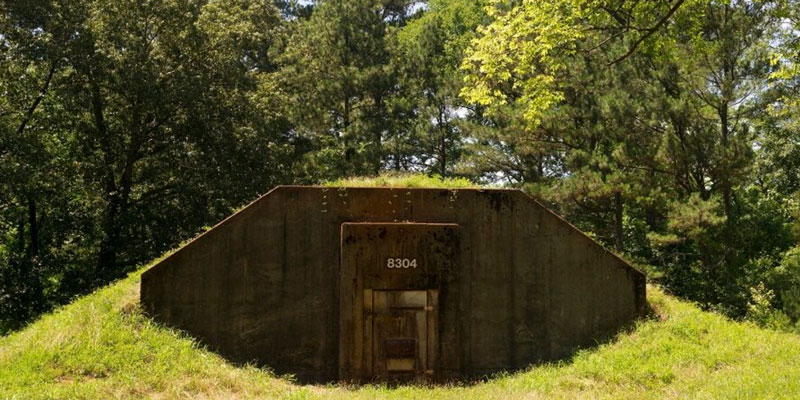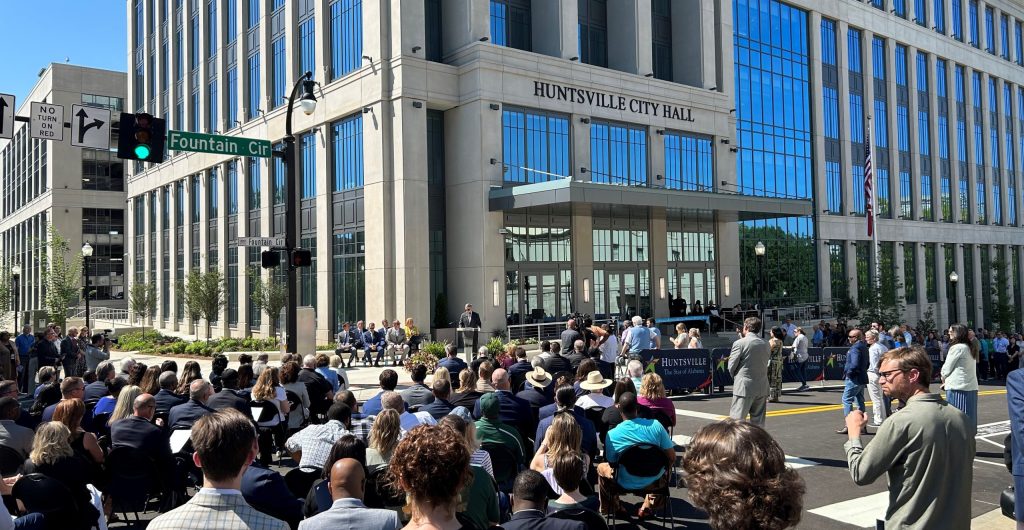Hundreds of bunkers on Redstone Arsenal have led to hundreds of questions over the years, from when were they built and why, to is that where the hobbits live? Did Wernher von Braun’s family have their very own bunker? And what are they currently used for?
Rick Cooper, the space manager at the Arsenal, said the bunkers were built in “1942-ish” for storage of explosive ordnance and were probably among the first constructions when the installation was established.
In later years, the bunkers were reportedly used as fallout shelters.
“My understanding is during the Cold War, everyone on post was assigned one of the ‘igloos,’” said Ben Hoksbergen, the cultural services manager at the Arsenal. “At the time, apparently they had shelving with survival supplies,” such as canned food.
Hoksbergen is not sure whether the bunkers were also used during tornadoes, but said there were probably fallout drills.
An Aviation and Missile Command website on the history of Redstone Arsenal notes such an exercise during the week of Sept. 17, 1962: “During this week, about 1,600 RSA military personnel participated in a passive defense measures test. They were evacuated from the barracks on signal to designated fallout shelters (old World War II-era storage igloos), where they remained for 48 hours before they returned to the barracks. The test provided a wealth of information on shelter occupancy.”
Cooper said most of the 406 bunkers were originally each 2,100 square feet, but some have since been modified. Their original cost was $7,600 each, he said, but today’s replacement cost is a whopping $1.1 million.
“They appreciated over time,” Cooper said, adding that today the bunkers now serve a variety of uses, including explosives storage, regular storage and even lab space.
Some have been modernized, some have electricity and others are preserved in their historic states.
In fact, Hoksbergen said 19 of the bunkers must remain in their original World War II condition because of their historic significance. The Army doesn›t normally list historic properties on the National Register, he said, but if it did, the “igloo farm” would qualify.
At their time of construction, they were part of the Gulf Chemical Warfare Depot, Hoksbergen said. “That whole area is a historic district.”
Today, the untouched bunkers are “pretty bleak,” he said. “A lot of moisture problems. Big concrete vaults.”
The section of bunkers that remain in their original condition are adjacent to each other in an “underutilized site,” he said.
Jake Roth, chief of master planning, calls the bunkers by a more official name.
“We refer to them as ECM, Earth Covered Magazines,” Roth said of the concrete structures, which are each covered by a 3-foot berm and feature a heavy steel door.
The military is still building similar modernized structures for use as control houses to observe various tests, he said. “It’s a great model.”
At the Arsenal, the retrofitted bunkers are ideal for storing explosives since they are required to be a certain distance from other building structures, Roth said.
They are also useful for storing a lot of other things because of their environment inside.
“It’s fairly low humidity and it’s somewhat temperature controlled,” Roth said.
Some of the bunkers have also been water proofed. About 20 of the structures were upgraded in the last few years “to be used by somebody for something,” Roth said.
“Over the years, as we use them, we have been going back, taking the dirt off, putting on a waterproof barrier, and putting the dirt back on,” he said, adding that grass is then planted on top to prevent erosion.
The bunkers are still functional and useful, he said. “We just have too many of them. They do come in handy from time to time.”
Cooper said while many of the bunkers are empty, the process of using one for storage takes several steps, beginning with submitting a work order, followed by a lot of paperwork.
Meanwhile, passers-by continue to speculate about them.
“We’ve heard everything from ‘that’s where we keep all the aliens,’ to ‘that’s where we keep the top-secret technology,’” Hoksbergen said.
To his knowledge, no one from Hollywood has approached anyone at the Arsenal about making a film on the site, but in the future, who knows. “It would be perfect for a zombie movie,” he said.
This article was first published in the Redstone Rocket and is republished here with the permission of the U.S. Army Garrison Office.













